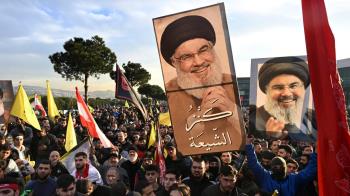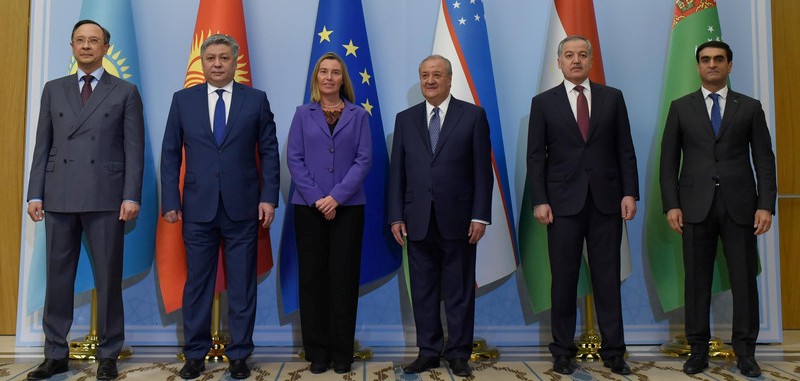Alwaght- Every year in November, the EU holds a meeting with the Central Asian states. The 14th one was held on November 23 by foreign ministers of Uzbekistan, Kyrgyzstan, Turkmenistan, Tajikistan with the high EU representative, vice-president of European Commission, and a couple of other top European officials. The summit focused on security issues, environment, human rights, and other cases on top of them Afghanistan. Such a special attention to this region by EU raises some questions: Why is Central Asia important to the Europeans? What challenges face expanded ties between the two sides?
Central Asia significance
Central Asia, bordering China, Russia, Iran, and Afghanistan, covers five former Soviet republics with a size of about 4 million square meters. With a population of 70 million, the region has a GDP of nearly $260 billion. The region is a significant link route connecting Europe to East Asia and China. It is known as the land of undiscovered energy resources. Since the Cold War, the region has been a scene for a contest for influence among China, the US, Russia, EU, the Israeli regime, and Saudi Arabia.
Over the past few years, the region even drew further attention by the EU amid Brussels’ struggle to diversify the origins of its energy. For the sake of its own security, the EU needs to get a toehold in this region which has been one of the main recruitment centers of terrorist groups such as Al-Qaeda and ISIS.
Its proximity to Afghanistan facilitates EU’s prevention of radicalism and crisis from entry to Europe. As part of these efforts, Federica Mogherini, the EU foreign policy chief, participated in Central Asia-Afghanistan summit in mid-March. She tried to help shore up Central Asian security and economic cooperation to face the extremist militias and thus prevent intensification of regional crises. After 9/11, EU sought to reshape security structure in Central Asia to close the way to terrorist attacks in Europe.
Central Asia’s importance for EU in a polarized world
EU defines its identity as different from that of the US, China, and Russia. With the US power shrinkage over the past decade and Washington resorting to the trade war and win-lose policies as a response to such a situation – which, in turn, cracks the trans-Atlantic relations– the multi-polar world order is rising again. EU will certainly be one pole among others. Central Asia, as a field where the rising powers contest for influence, finds favor with the EU.
Europe is an economic, cultural, political, and military power. Over the past two decades, it adopted more organized and principal policies in Central Asia. A first serious attempt was made in 2005 when the bloc picked a representative for its commission in Central Asia. The key aim was to launch aid and cooperation programs. The first program, launched from 2002 to 2006, aimed at a decrease in poverty and an increase in security and stability through economic growth. To maintain its position as a strong party in the region, the bloc in 2007 approved the “Strategy for a New Partnership” with Central Asia.
The strategy concentrated on spreading EU-approved democratic values and standardization of the governance in Central Asian states. This openly indicated a European will to spread its ideology in the region to take an essential step towards expanding its strategic depth in this region.
After successful earlier plans, EU designed a new strategy for a higher level of relationship with Central Asia. An EU leaders’ summit on June 19 discussed and approved the principles of the new strategy. Details of it are yet to be publicized. Under the new plan, the EU decided that to propagate its values and democratization, it needs independent media work in this region.
Now that Iraq restored stability after ISIS defeat and parts of the terrorist group’s factions relocated to Afghanistan, Europe, under the new strategy, seeks a further presence in Afghanistan in hope of stability in Central Asia. Another part of the strategy eyes a regional energy pipeline and European financial institutes’ investment in the region. To fix its status as a power in a new world order, Europe needs to establish its energy provision infrastructure in Central Asia for long-term supply.
Europe and future of power relations in Central Asia
Central Asia is part of the region the British geographer Sir Halford Mackinder in 1904 called in his theory “heartland.” The heartland, also called “pivot area”, is a massive region covering parts of Europe, Russia, Central Asia, and Iran. Mackinder suggested whoever dominates this region, in fact, dominates the whole world. That is why still any part of the heartland is open to sway, the world powers enter a race for it. To beat the other contenders, the EU needs an effective foothold in this region.
To effectively compete with the US and other powers in this region, the EU also invests in the protection of the region’s environment, something making the regional states find the partnership with Europe attractive. The EU launched innovative projects in 2015 to guarantee fresh water supply in the region. In EU-Central Asia summit in 2017 in Samarkand, the Europeans talked policies with regional states that mainly aimed at Europeanization of the region.
In preparation for a multi-polar world, Europe needs a long-term presence in Central Asia. At the Brussels summit a couple of days ago, the Union agreed “region by region” development as part of 2019 strategy. Brussels seriously seeks to take the management in parts of the world where the US avoids to do so. For example, the recent meeting with Central Asian states also discussed ways to confront the climate change in the implementation of Paris climate agreement, from which Trump withdrew Washington last year. Such EU initiatives present the bloc as a replacement for the US. The summit also reached accords to prevent desertification, support renewable energies, and cut greenhouse gases.
What are EU's challenges in Central Asia?
Geographically, EU is remote from Central Asia, something proving a challenge when it comes to rivalry against other powers. Moreover, the regional states are far from consensus in their EU vision. On the other side, Central Asian elites criticize Europe for allocating small financial sources to this broad area of the world, though the Union tried to address this criticism in its 2019 strategy on a selective basis.
Yet another problem is the disparity between the democratization process and the social make-up of the region. To address this obstacle, the bloc tries to bridge the gap using independent media by creative ideas.
Another challenge is the Trans-Caspian Gas Pipeline project that can unleash environmental problems due to its subsea nature. But if Europe seriously pursues energy security, it can find alternative routes through Iran and Russia. Mogherini eyes constructive relations and avoidance of tensions with Russia. Should this policy is pursued in the long run, EU’s foothold gain strategy will be more successful.
Europe is aware that Central Asian security is tied to Afghanistan’s. This issue is also true to Iran in other issues. Europe's success in the region heavily depends on security and economic cooperation with Iran. After all, a large part of Central Asia once was Iran's territory and the cultural, economic, geopolitical, security, and lingual bonds between the two remain in place to date.



























